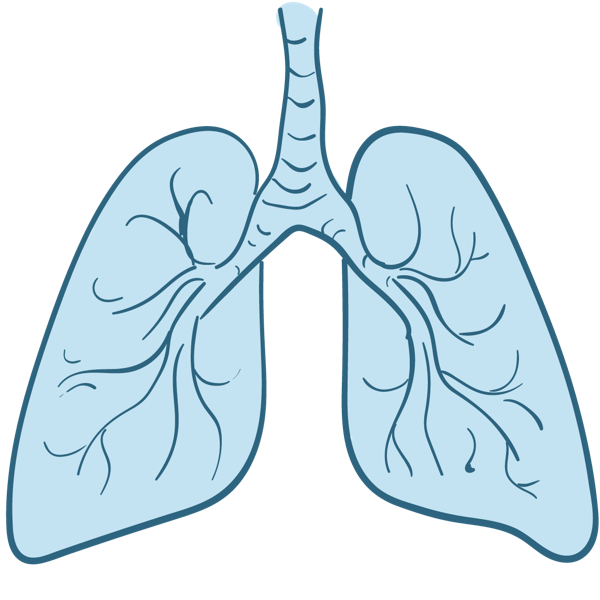As the days get colder, we tend to shut doors and windows, crank up the heating and put a few logs on the fire. How does that affect the quality of the air we breathe?
This winter the days are getting shorter and there’s a chill in the air.
In the summertime, open doors and windows cool us down, but as it gets colder we’re more conscious of letting heat escape. We start to think about turning on the central heating and we may even stoke up our stoves and fires. It’s a cosy image, but the change in season takes a toll on indoor air quality, or IAQ.
In the developed world, we spend 90% of our time indoors. Research shows that key pollutants are up to five times more concentrated inside than outside1.
Contents:
-
The health risks of poor quality indoor air
-
The solution
-
Tips for healthy air this winter
-
Key takeaways

The health risks of poor quality indoor air
-as-temperatures-fall-in-autumn-and-winter-insert-1.jpg?width=593&name=AS-AT-B2C-AS-AT-B2C-How-to-optimize-indoor-air-quality-(IAQ)-as-temperatures-fall-in-autumn-and-winter-insert-1.jpg)
Thanks to the latest research, we know more than ever before about the damage that indoor pollutants do to our health. The WHO estimates that poor indoor air is responsible for nearly 3% of the global burden of disease2, while the State of Global Air survey calculates that half the world’s population, or 3.6 billion people, are exposed to household air pollution3.
Particulate matter and your fireplace
 Fireplaces are a wonderful addition to a wintery home, but smoke forms when wood is burned. The smoke is made of a complex mixture of gases and fine particles also called particulate matter. Particulate matter, or PM, is a range of particles of dust, dirt, and liquids that become suspended in the air.
Fireplaces are a wonderful addition to a wintery home, but smoke forms when wood is burned. The smoke is made of a complex mixture of gases and fine particles also called particulate matter. Particulate matter, or PM, is a range of particles of dust, dirt, and liquids that become suspended in the air.
To create a welcoming atmosphere with fresh air and minimal smoke, simply ensure you burn wood efficiently with a certified wood stove and dry, seasoned wood.
Carbon dioxide and breathing in other peoples breath
![]() Keeping windows closed during winter prevents an uncomfortably cool breeze. However with closed windows and more time spent inside, CO2 levels can rise as humans expel it when we breathe. Higher concentrations of CO2 cause headaches, restlessness, drowsiness, poor sleep, snoring, and other problems. When levels reach 1,000 ppm scientists find a notable decline in decision-making capabilities, while 1,400 ppm sees a 50 percent drop in cognitive ability4.
Keeping windows closed during winter prevents an uncomfortably cool breeze. However with closed windows and more time spent inside, CO2 levels can rise as humans expel it when we breathe. Higher concentrations of CO2 cause headaches, restlessness, drowsiness, poor sleep, snoring, and other problems. When levels reach 1,000 ppm scientists find a notable decline in decision-making capabilities, while 1,400 ppm sees a 50 percent drop in cognitive ability4.
Radon gas
 Radon is the number one cause of lung cancer among non-smokers, yet 60% of Americans we surveyed don’t know or are unsure about radon gas in the home4.5.
Radon is the number one cause of lung cancer among non-smokers, yet 60% of Americans we surveyed don’t know or are unsure about radon gas in the home4.5.
When we make our homes more airtight, we’re also at risk of increasing build-ups of radon. This colorless, odorless radioactive gas is produced when uranium breaks down in the soil, rock, and water under our feet. It enters our homes through cracks in the foundation and it is the second biggest cause of lung cancer after smoking5. The risk is lowered by good ventilation, which becomes more difficult as the weather gets colder.
High humidity
Closing doors and windows can lead to a more humid environment too, especially as we dry clothes on radiators or tumble dryers, rather than outdoors. Higher humidity causes mold, moisture and condensation, which all impact our health negatively.
Find out more about improving humidity here→
Airborne chemicals
VOCS – volatile organic compounds that are also emitted from paints, solvents, cleaning products, carpets, and furniture. They contribute to health problems like cardiovascular disease, respiratory illnesses, as well as irritating eyes, ears, nose and throat, causing headaches and dizziness, and impairing the memory.
In the cooler seasons, as we concentrate on heat rather than ventilation, these pollutants have less opportunity to escape.
The solution, especially in winter
-as-temperatures-fall-in-autumn-and-winter-insert-2.jpg?width=593&name=AS-AT-B2C-AS-AT-B2C-How-to-optimize-indoor-air-quality-(IAQ)-as-temperatures-fall-in-autumn-and-winter-insert-2.jpg)
If you’re going to take action to improve the quality of the air you breathe, first it’s important to have the correct information about indoor air quality. Indoor air quality monitors collect the necessary data and provide insights to allow you to fix the problem.
Industry leading solutions can detect radon, the chemical that is responsible for 13.4% of lung cancer deaths in the US and similar percentages can also be found globally6. Frequently, levels of the gas are monitored before a real estate purchase, but that is merely a snapshot that doesn’t reveal ongoing concentrations of this pollutant.
The detectors will measure build ups of VOCs, that may inflame the sinuses, or cause flare-ups of respiratory complaints. These chemicals are most frequently produced by ‘off gassing’ from household products, but new evidence shows they’re also emitted by microbial activity in molds, fungi and the like.
CO2 is a major cause of complaints about poor air quality. In poorly ventilated and densely populated rooms, concentrations can reach 5,000 ppm, which causes major cognitive impairment7. The solution is supplying more fresh air and this becomes more difficult in the winter. An IAQ monitor will let you know if levels of CO2 in your home are a problem, and when to ventilate.
The sensors also gather data about humidity, temperature and air pressure. These conditions affect how we feel and how we perform, whether we’re working, studying, or having leisure time. They’re linked to complaints like headaches and migraine, variations in blood pressure, and joint pain.
We have more evidence than ever before that IAQ has a substantial impact on how clearly we think. A study co-written by the Harvard T.H. Chan School of Public Health revealed that improved indoor environmental quality could boost decision making scores by 101%8. In schools, there are proven links between better air and better grades.
Businesses and individuals are becoming more aware of the importance of monitoring the air they breathe, both for the benefits to health and the improvements in performance.
Tips for healthy air this winter
Monitoring radon and indoor air means that you have detailed information about the air you and your family breathe. You can access the data via a simple app, or user-friendly dashboard that will provide tips about eliminating any problems.
A supply of fresh air is key to improving your indoor environment. In winter, when it isn’t always possible to open a window or door, this might mean using a ventilation system.
Humidity is associated with dampness, which can affect 10 to 30% of homes9. Ideally, levels should not fall below 30% or exceed 59% indoors. Humidity is affected by everything from house plants to drying clothing, so it’s important to keep measuring it and strike the perfect balance.
High humidity can be combated by ventilation and by using devices like a range hood or a bathroom fan. If possible, dry your clothes outdoors or in an outbuilding. Replace air conditioning filters regularly and consider installing a dehumidifier.
It’s nice to keep our homes snug and warm in the colder months, but temperatures can have a negative effect if they’re kept too high. A recent study by a team from Harvard showed that PSAT results, that test abilities in math and reading, fall whenever conditions are warmer.
Whenever your kids are studying at home, you want to make sure that the environment is ideal for learning. With an IAQ monitor, you can tweak temperatures, so that they fall within the optimum range.
Effective ventilation is also a solution for pollutants like VOCs and CO2. Equally, you may want to think about swapping some products for healthier alternatives. Many paints, for instance, are now available in low VOC or no VOC varieties. Repurposed and upcycled furniture often gives off lower levels of damaging gases than brand new equivalents.
As we discover more about how the air we breathe affects our health and wellbeing, the case for monitoring IAQ becomes ever stronger. In winter, it becomes more difficult to provide a supply of fresh air. An IAQ monitor gives you the information you need to protect against pollutants and take better decisions around your home.
Key takeaways:
- Closing doors and windows in the colder months and cranking the heating up can cause a buildup of pollutants that damage our health.
- Poor ventilation causes poor quality air that in turn is associated with health issues and cognitive impairment.
- By monitoring the air we breathe we have a valuable source of information to avoid indoor air hazards.
- The good news is that many of the problems linked to poor IAQ can be overcome by better ventilation, filters, and healthier product choices.










.webp)
